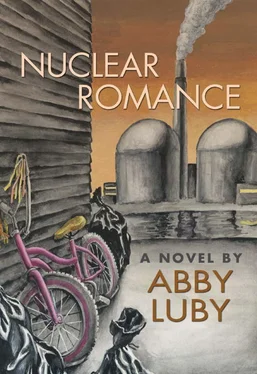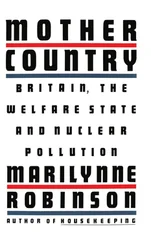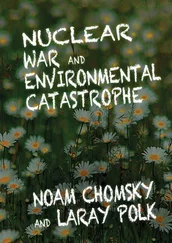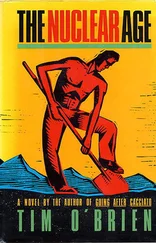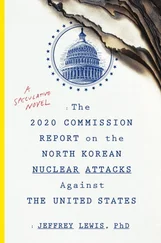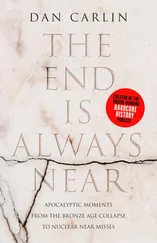She made lists of the things she didn’t understand. In the end it all came down to one basic question: Was the plant safe?
“Yeah, the plant is safe,” said Isling. “It’s old, but we see the plant operating within code. Did you know that there are three reactors? One is already closed.”
His tactic: overwhelm her. Throw her a tome of detailed history laced with technical jargon. She wouldn’t know what hit her. After ten minutes, knee deep in more than she asked for, Diana lost her focus.
“Wait, Mr. Isling. What is background radiation again? And just what is inside a reactor that could rupture?”
He launched into a series of explanations. Diana furiously scribbled notes, the phone pressed hard into her ear. Mutely, she shook her head.
“Look, Mr. Isling, can you please slow down? I’m really a little slow with all this.”
“Oh. Okay. Sorry. I’m used to talking to the press. They usually have a basic knowledge about nuclear power. I’ll backtrack a little.”
He rattled off more information. Yes ALLPower had some problems, but they were being monitored. If the public’s health and safety were in any way compromised, the NRC would take action.
“What kind of action?” Diana asked.
“We would give them a warning. Maybe a fine. Something like that.”
“What if something really dangerous happened, like at Three Mile Island. Or Chernobyl?”
“No, no, no. Those plants are a different design. Listen, I got to jump off the phone, but feel free to call or e-mail when you have more questions.”
Diana was exasperated. A nuclear power plant was complicated, and it seemed as if a myriad of problems could quickly become a dangerous situation—if she understood him right. Maybe she didn’t quite get what Isling was talking about. Maybe she should let it go for a spell.
The plant and its problems stewed around in her head for weeks, like a dull headache. It ran a parallel course with her everyday existence, a course that eventually collided, unexpectedly, with the innocent faces of her young students. What was in store for them? Why should tons of lethal radioactive waste that lasted several hundreds of years be their problem?
She plunged in again and decided to have social gatherings at her house specifically to talk about the plant. Whether it was an evening coffee klatch or a lawn party, Diana found herself pressing for some kind of action. Sipping wine by the lake with Lin sitting in her lap seemed to soften the grim conversation. She gave out copies of a list she compiled enumerating accidents that happened at the plant over the last decade.
“We can organize, pressure politicians,” she suggested to her friends. Some were wary. Battling a huge corporation? A David and Goliath scenario for sure. What could they do and how would they do it? Diana knew it was a challenge, but it was imperative they get their voices heard.
She was systematic in reaching out. It was her style to be persistent and to proceed logically. Many found her convincing, and after months of “entertaining,” Diana had the help of a handful of friends who would, in turn, talk to other people, get petitions signed, call local politicians. As the circle grew, she saw the beginning of a grassroots movement to close the plant. The goal was to warn about the dangers of the plant not only to the immediate community but also to get the word down to New York City, just twenty-four miles away. If a Chernobyl-type accident happened at ALLPower and radiation spread south, the city could easily be wiped out. Tapping into the press was imperative.
Diana appealed to other environmental groups, some with the backing of famous movie stars, others aligned with rich foundations pushing for conservation. People became concerned, even angry, but Diana’s campaign never quite reached the critical mass that would loosen the utility’s grip on local government and taxpayers.
The more she learned about how nuclear power worked, the more her own inner fears deepened and crept up on her. She felt an imaginary line connecting her gut to the hulking mass of concrete, the impenetrable buildings harboring dangerous radioactive fuel that was stored precariously in the pools and in the open on the plant grounds. It played in her psyche as a formidable foe—omnipresent, a shadow that hovered over her as she moved about her community. She held fast to this connection; relinquishing its presence even for a moment would lessen her drive to close the plant down.
A fire drill at school prompted another fear. Would an accident at the plant require a special evacuation? Was there a workable plan? Diana did the legwork and found that a plan had been drawn up over thirty years ago, when the population was less than half what it was now. But what was the plan exactly, and did it explain what kids in school were supposed to do? Where to go? Not surprisingly, copies of the evacuation plan were neither at the school nor at the superintendent’s office. For the first time, she called ALLPower to see if they had a copy and ended up talking to their PR guy, Bob Stalinsky.
“Geez, Ms. Chase. I don’t think I’ve ever seen a plan,” Bob cooed into the phone. Who was this gal and why on earth was she asking about evacuation?
“Have you even heard about the plan, Mr. Stalinsky?”
“Can’t say I have. You know ALLPower has its own evacuation plan for our workers. We’re not required to have a local plan. Why don’t you try the NRC. They might have it.”
“What’s your plan like? Do workers have to get a certain distance away from the plant?”
“To tell you the truth—can I call you ‘Diana’? Well, I never really looked at ALLPower’s evacuation plan. Never had to. Never worried about it. What’s this all about—if you don’t mind my asking?”
The guy made her feel itchy. “I’m an assistant principal at a grade school, and I’m concerned about what could happen to the kids, that’s all. Listen, thanks for the information, Mr. Stalinsky. I’ll check with the NRC.”
It would be her second call to the Nuclear Regulatory Commission, and she hoped for yes or no answers from Dick Isling.
“Evacuation isn’t under our jurisdiction,” he told her. “Our oversight covers only plant components. Have you tried FEMA, the fed’s emergency management agency?” She called FEMA and waded through several staff people before getting to the right person. Yes, there was a plan, but it was probably outdated. They might be able to find a copy; it was probably archived on microfiche. Meanwhile, why doesn’t she try her state emergency office to see if they had it? She called the state and got more of the same.
Maybe she could get a straight answer from her local county legislator, who would value her as a voting constituent. But when she got him on the phone, the man had only a vague idea of what she was talking about.
It was the kind of frustration that drove Diana to obsession. Every response reeked of apathy and irresponsible government, which was so ingrained in the system, and even worse, that was accepted as if nothing was wrong. It was routine; it was just the way things were.
Finally, after months of dogged pursuit, a copy of the evacuation plan arrived in the mail from SEMO, New York State’s emergency office. Diana took the sixty-five-page manuscript typed on plain white paper and, with a cup of strong black tea, sat in her overstuffed armchair and started reading. Halfway through the report the hairs on her neck started to bristle.
The deep pool of water is still. An aqua glow emanates from the bottom, where a jungle of steel racks and metal hardware are submerged like a sunken ship in a remote corner of the sea.
Forty feet down and under the weight of thousands of gallons of water, the racks are illuminated by glinty points of light that pierce the water and bounce off long, thin tubular pipes. Inside these brassy vessels are the skeletons of atomic fission, parts that once moved in an unwieldy dance of atoms building to a feverish rhythm, then to a burning heat. Heat that bears an endless energy. Now these submerged bundles of long, thin, gold-colored pipes are filled with used, irradiated fuel, fuel that still holds a raging heat to be slowly cooled in the watery tomb.
Читать дальше
